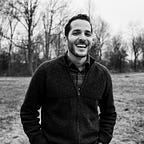Learning Numbers to Leave Numbers
In The Art of Learning, Josh Waitzkin traces his journey — from chess prodigy to world champion in Push Hands Tai Chi — through a common thread of principles woven in the pursuit of excellence across all performance domains and, as Waitzkin claims, through life itself. One such principle is articulated by Waitzkin as “numbers to leave numbers,” or “form to leave form”. What Waitzkin goes on to describe is a process where technical information is studied and practiced repetitively to the point where what was once technical and conscious, is integrated into what feels like natural intelligence.
“Sometimes there will literally be numbers. Other times there will be principles, patterns, variations, techniques, ideas. A good literal example of this process, one that does in fact involve numbers, is a beginner’s first chess lesson. All chess players learn that the pieces have numerical equivalents. Bishop and knights are worth three pawns, a rook is 5 pawns, a queen is 9. Novices are counting in their heads, or on their fingers, before they make exchanges. In time they will stop counting. The pieces will achieve a more flowing and integrated value system. They will move across the board as fields of force. What was once seen mathematically is now felt intuitively.”
This process of integrating technical understanding with natural creativity and intuition is a delicate balance it seems. Spend too long on systematic, technical repetition and you may lose sight of the fascination and creativity which pulled you into the pursuit in the first place. Integrate too quickly and you won’t have the technical foundations necessary to intuit the correct decision or action in the moment. But the way Waizkin describes it doesn’t seem like there is actually a choice to make as to when to begin “leaving numbers”. It seems to be almost a natural progression from “form” to “leaving form”; one you as the performer shouldn’t force or resist, but monitor constantly and adapt to. Both processes can go on simultaneously, working together to inform and enhance the learning process. As Waitzkin describes for himself, it is “about searching for the flow that [lies] at the heart of, and transcend[s], the technical.”
